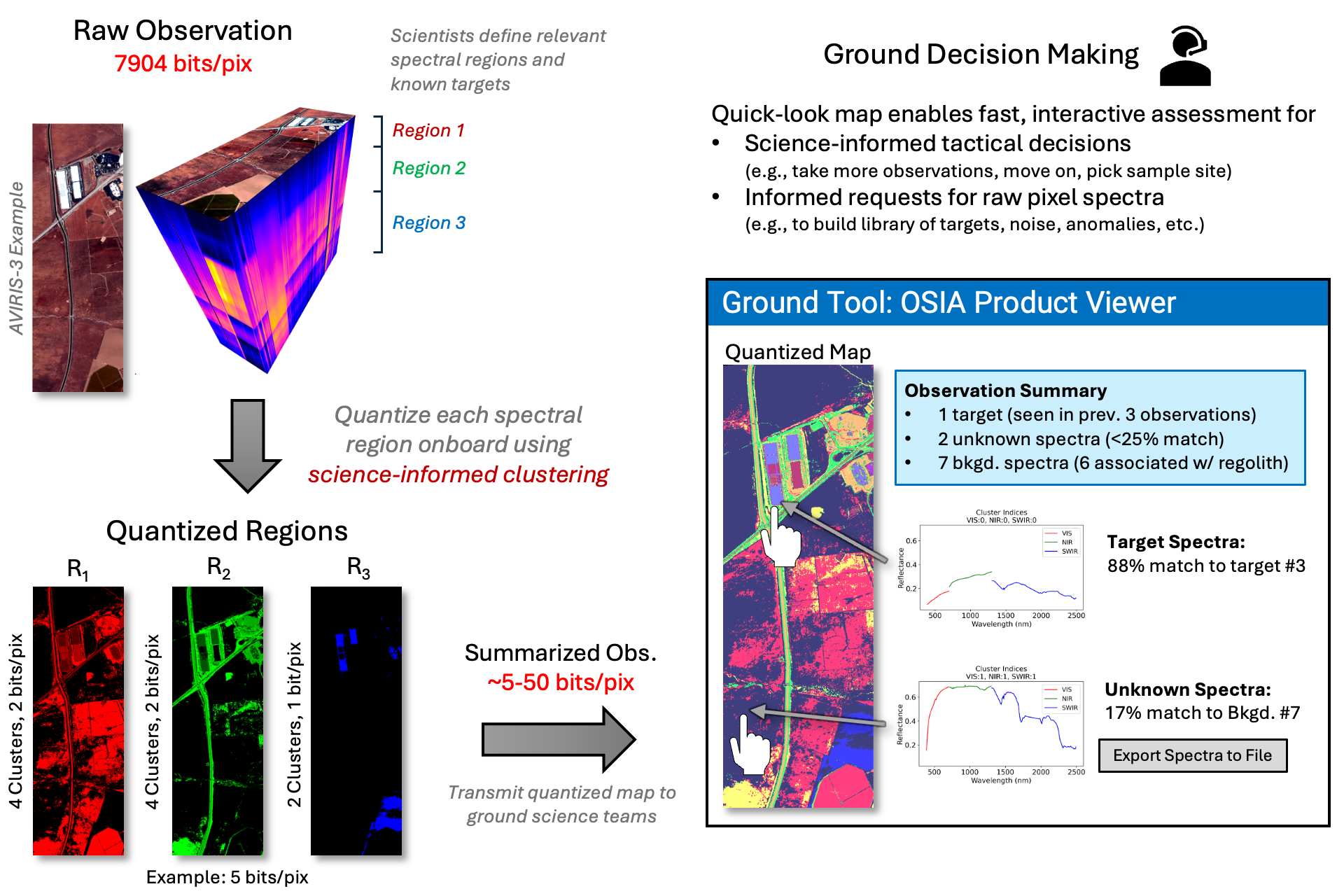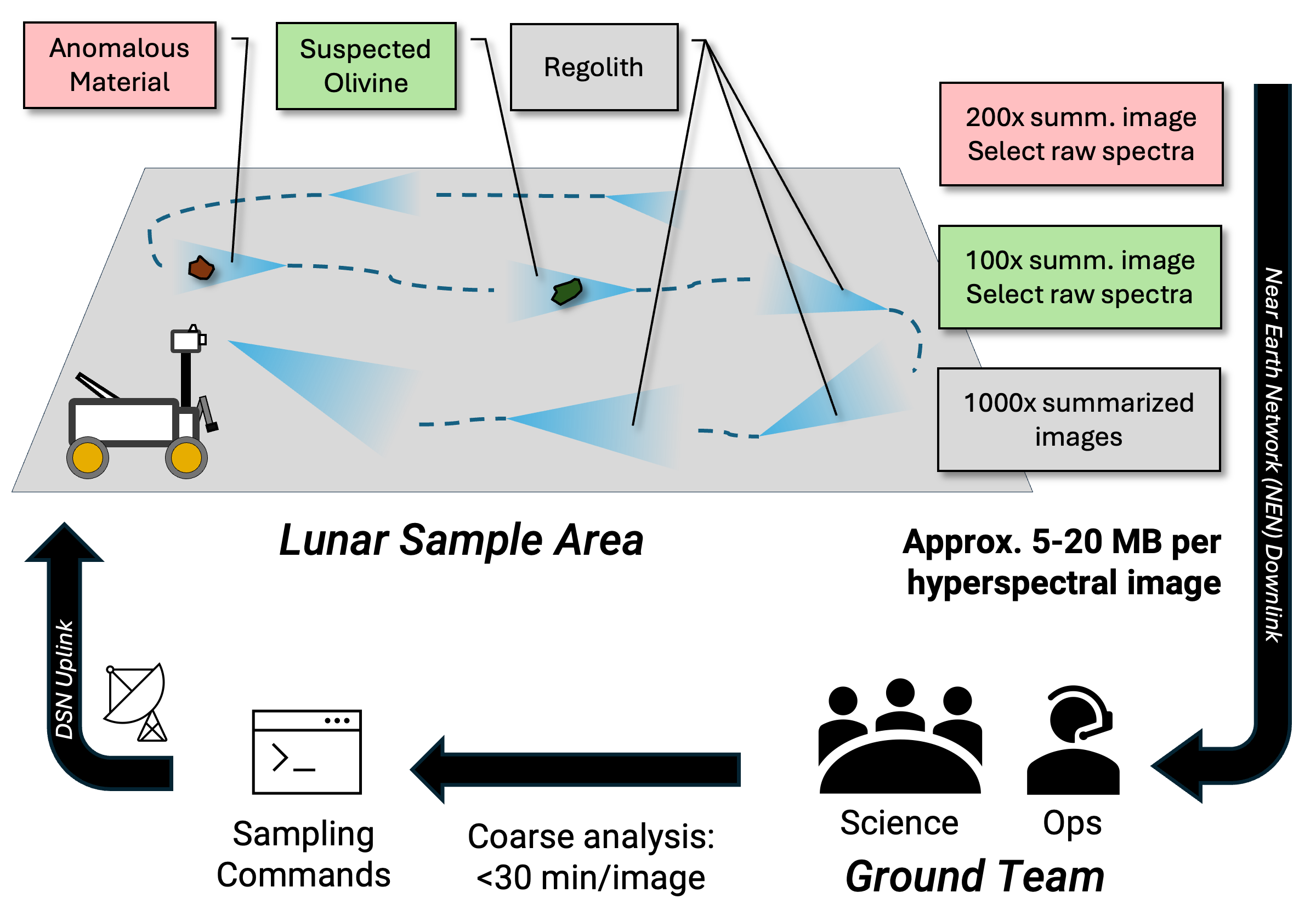Spectral Information Distillation for Lightweight Exploration (SPINDLE)
Principal Investigator
Mark WronkiewiczEmail: Mark.D.Wronkiewicz@jpl.nasa.gov
Project Overview
Imaging spectroscopy is a growing discipline within and outside NASA. Imaging spectrometers (or “hyperspectral” cameras) can capture information over a wide swath of the light spectrum – much wider than the visible color range we can see as humans. This makes them valuable instruments for science as they have the ability to detect specific minerals, estimate temperature, and detect trace gasses.
JPL is developing multiple new hyperspectral imagers for future planetary science missions to the Moon and Mars. However, these sophisticated cameras have challenges, especially when deploying them beyond low-Earth orbit. These cameras can (1) take many times more data than we can transmit home and (2) the data is challenging to understand quickly. Less data directly limits science. Further, the size and complexity of these images makes it hard to use them to guide mission decisions in real time.
Approach and Results
SPINDLE is focused on these two challenges to improve science return for future missions:
- Data Bandwidth: SPINDLE uses onboard science instrument autonomy (OSIA) algorithms to summarize hyperspectral images. The compression is tunable and balances bandwidth and science needs.
- Operational Agility: SPINDLE includes a visualization platform to interact with downlinked data. This helps mission science and operator teams get a coarse understanding of the environment through the lens of these powerful cameras, which can guide mission decisions.
While still early in the project, we successfully demonstrated a proof-of-concept to summarize images from the Moon Mineralogical Mapper (M3) instrument. Initial results retained valuable science information (i.e., pyroxene absorptions) while reducing data ~200x. The first version visualization platform allows interaction with the data including pixel selection, spectra visualization, and on-the-fly absorption calculations.
 SPINDLE divides spectral bands, compresses them independently, and rehydrates them on the ground. The algorithm is tunable based on science needs.
SPINDLE divides spectral bands, compresses them independently, and rehydrates them on the ground. The algorithm is tunable based on science needs.
Mission Infusion
A handful of mission concepts targeting the Moon and Mars are considering the inclusion of imaging spectrometers. We aim to reach TRL 4 by end of FY26 and TRL 5-6 in FY 27/28 such that SPINDLE is an option for improving science return for missions facing bandwidth and timeliness constraints.

Using SPINDLE, future surface missions can return highly summarized images to aid in tactical decision making (e.g., during sampling or follow up observations). For mission concepts like the Endurance rover, images can be transmitted more easily, so science and ops teams can incorporate imaging spectrometer information into sample site selection.
